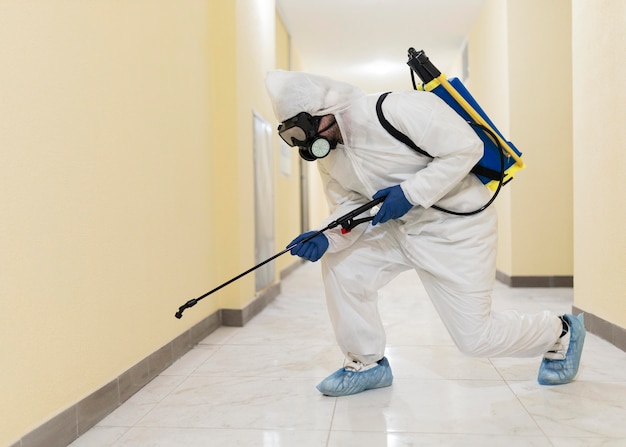
Expert Bee Removal Services in Cleveland, OH
Bee removal is a crucial service in Cleveland, OH, where bees play an essential role in the ecosystem by pollinating plants and contributing to biodiversity. However, when bees establish hives in residential or commercial areas, they can pose significant challenges, including health risks and property damage. Professional bee removal services are vital in managing these situations effectively, ensuring both safety and the preservation of bee populations.
The Importance of Professional Bee Removal
Engaging expert bee removal services is essential for several reasons. Trained professionals are equipped with the knowledge and tools to handle bee infestations safely and efficiently. They ensure that bees are removed without harm to the colony, often relocating them to appropriate environments where they can continue to thrive without posing a threat to humans.
Health and Safety
- Bees can be aggressive when defending their hives, leading to potential stings that can cause allergic reactions in some individuals.
- Professional removal minimizes the risk of attacks, ensuring safety for residents and workers in the affected area.
Preservation of Bee Populations
- Experts follow environmentally-friendly practices that prioritize the wellbeing of bee populations.
- They often collaborate with beekeepers to relocate hives, contributing to conservation efforts.
Common Bee Species in Cleveland, OH
Understanding the types of bees commonly found in Cleveland can help in identifying and managing potential infestations. The most common species include:
- Honeybees: Known for their role in pollination and honey production, honeybees are social insects that can form large colonies.
- Bumblebees: These bees are generally larger and less aggressive, often nesting in the ground or in sheltered areas.
- Carpenter Bees: Unlike other types, carpenter bees tend to bore into wood to create nests, potentially causing structural damage.
Methods of Bee Removal
Professional bee removal involves several techniques tailored to the specific situation. These methods ensure effective removal while prioritizing safety and environmental considerations.
Live Bee Removal
This method involves capturing and relocating the bees to a suitable habitat. It is the most environmentally-friendly option, allowing the bees to continue their ecological roles.
Exclusion Techniques
Exclusion involves sealing entry points and using deterrents to prevent bees from establishing hives in undesirable locations. This proactive approach reduces the likelihood of future infestations.
Integrated Pest Management (IPM)
IPM is a comprehensive approach that combines various methods to manage bee populations sustainably. It focuses on long-term prevention and minimal environmental impact. Learn more in this detailed guide.
When to Seek Professional Help
Recognizing when to call in experts is crucial for effective bee management. Situations that typically require professional assistance include:
- Large swarms or established hives in residential or commercial areas.
- Bees nesting in difficult-to-reach or hazardous locations.
- Repeated infestations despite DIY removal attempts.
In such cases, professional services ensure safe, effective, and eco-friendly solutions. Read more about this topic to understand the benefits of expert intervention.
Conclusion
Bee removal is a critical service in urban areas like Cleveland, OH, balancing the need for safety with the importance of preserving vital pollinator populations. Engaging professional services ensures that bee infestations are managed effectively, maintaining both human safety and ecological integrity. For individuals facing bee-related challenges, seeking expert assistance is the best course of action. Explore further insights here. By doing so, communities can coexist with these essential insects while mitigating potential risks and damages. Find additional information here to support informed decision-making regarding bee management strategies.